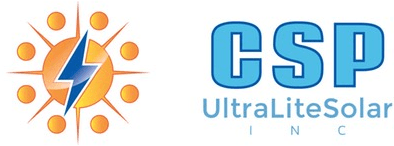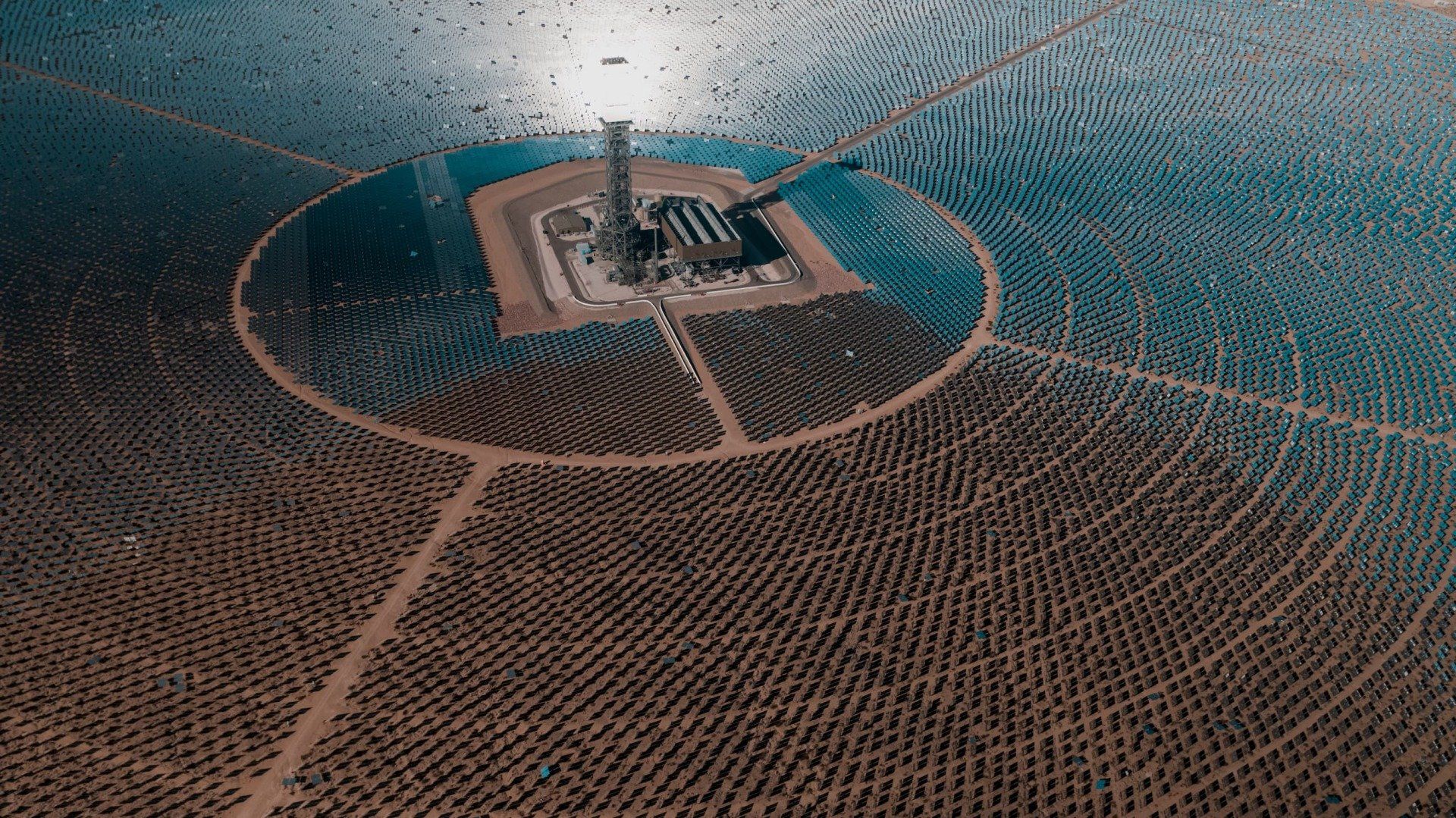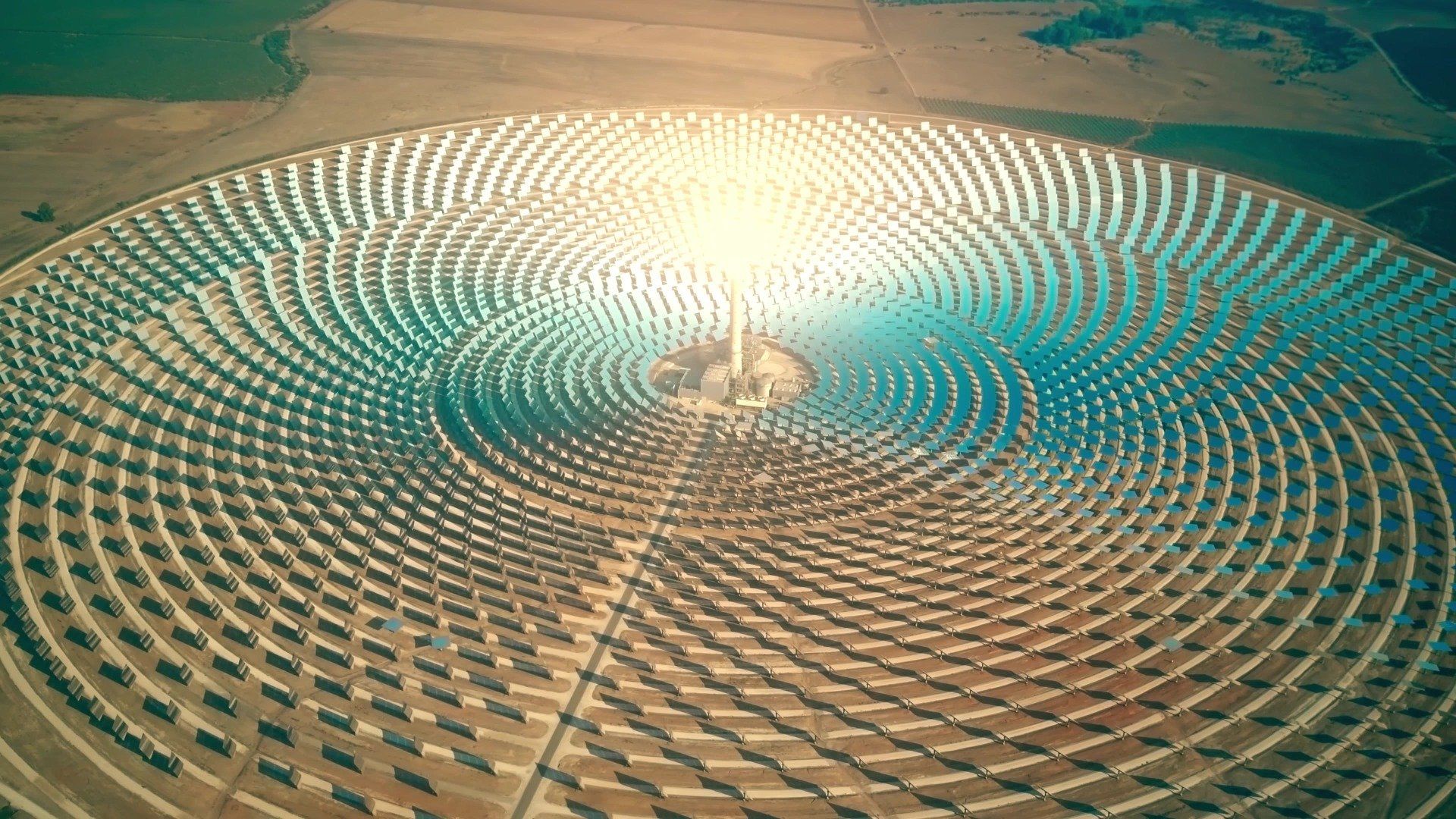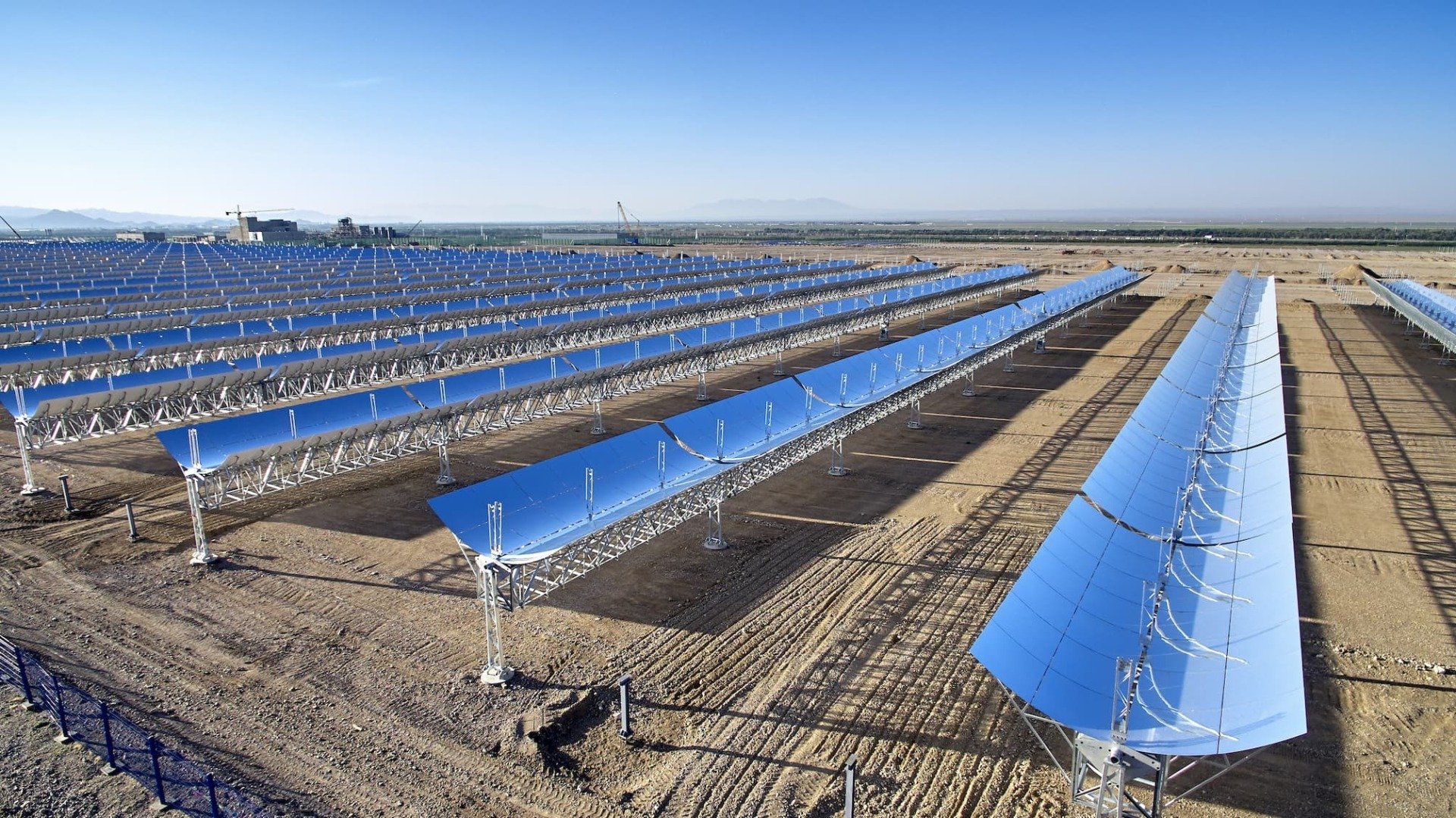Technology Information
Solar Concentrators
By using thin-film material and air pressure-enhanced structures, CSPULTRALITESOLAR INC. can significantly reduce the cost of solar concentrators used in CSP plants. In conjunction with the CSP plant, a thermal-based storage system is used to store the heat for continued production of power during cloud cover and at night. Thermal energy storage systems do leak energy, so they are short-term storage used typically for overnight operation, but multi-day storage is possible.
For economic reasons, most installations have enough storage for 24 hours, as the sun comes up the next day and provides power and recharges the thermal storage system. This solution may provide power 80% (+/-) of the time in locations with more favorable solar conditions. As a backup, fossil fuel would be used within the same CSP plant using the same turbine that runs from solar. Why isn't solar power used 100% of the time? The reason is that there may only be 300 sunshine days a year in a particular geographic location. Some areas will have more, and some will have less.
Although it is possible to have up to seven days of storage, the cost of the plant would be higher as a result. For applications requiring much lower temperatures, a retroreflector may not be necessary. In this instance, the solar concentration is about 28 suns.
What is Concentrated Solar Power?
Concentrated Solar Power (CSP) is a technology that involves using a large-scale array of parabolic reflectors or mirrors to collect solar thermal energy. This heat energy is used to generate steam to produce electrical power with traditional turbines that are used in fossil fuel and nuclear plants today.
Parabolic Trough CSP Installations
Parabolic Trough CSP systems consist of a collection of parabolic (U-shaped) mirrors, lined up end-to-end, hence the term troughs. This configuration is also known as a linear concentrator system. Running through and suspended above each mirrored trough are tubes filled with what is known as a heat transfer fluid (typically a heat-sensitive synthetic oil that can withstand high temperatures). These oil-filled tubes are known as receivers.
Understanding the Numbers
To fully evaluate our technology, it's important to have the right measurement system. Often, the cost of renewables is measured on the name-plate rating, but this can be misleading. A better method is the levelized cost of energy (LCOE), which takes into account the higher capacity factor of our technology.
The National Renewable Energy Laboratory (NREL) of the US Department of Energy (DOE) has created a program called the System Advisor Model (SAM). This sophisticated software program can calculate the LCOE of solar power plants based on traditional CSP technology, as well as PV technology. This model only assumes several extra hours of nighttime storage with a capacity factor (CF) of 40%. We plugged our numbers into the model and modified it to accommodate overnight storage with a capacity factor of 80%.
- NREL's SAM calculates an LCOE of 13 cents per kWh for traditional CSP Trough Plants with a 40% capacity factor.
- Ultra-Lite with a 40% capacity factor calculates to 6.44 cents per kWh.
- Ultra-Lite with an 80% capacity factor calculates to 5.27 cents per kWh.
CSP Ultra Lite Solar. All Rights Reserved



